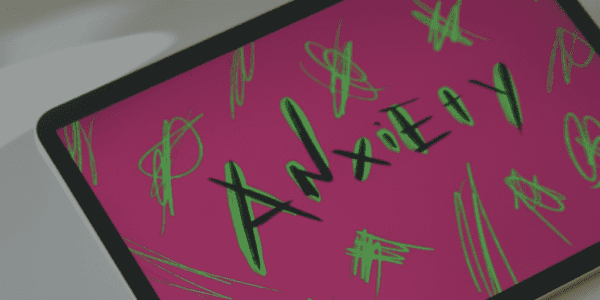What is Anxiety?
Anxiety and trauma-related disorders encompass various conditions that involve difficulties in processing fear and subsequent behavioral changes. Anxiety is a complex clinical concept that manifests differently in each individual and disorder. It may encompass a range of experiences, including the ability to anticipate future events, episodes of intense fear with accompanying physical sensations, and worries about potential judgment from others. PTSD is also recognized as a type of anxiety disorder.
How Does TMS Work to Relieve Anxiety?
Transcranial Magnetic Stimulation (TMS) is an effective and noninvasive technique used to stimulate specific areas of the brain. By inducing electrical currents, TMS can temporarily disrupt the function of a targeted brain region.
TMS involves using an electromagnetic coil placed on the skull to administer magnetic pulses directly into the brain. By manipulating nerve cell activity in specific areas of the brain responsible for regulating mood, pulses can be used as a treatment option for anxiety. This approach aims to target and alleviate symptoms associated with anxiety disorders.
When magnetic fields enter the brain, they generate tiny electrical currents. These currents then stimulate brain cells, leading to a fascinating phenomenon known as neuroplasticity. This process involves the rewiring and adaptation of neural connections within the brain. Moreover, TMS has the ability to release neurotransmitters such as serotonin, norepinephrine, and dopamine. This has significant impacts on brain function and overall well-being.
According to findings from TMS providers, the success rate for TMS therapy typically falls between 70 to 80 percent. Studies have indicated notable advantages for individuals who have been diagnosed with conditions such as “anxious depression” or depression coupled with anxiety. TMS has shown promising results in effectively alleviating symptoms and improving overall well-being.
The time it takes for patients to experience the benefits of treatment can vary. Some individuals may notice improvements in as little as a few weeks, while for others, it may take closer to four or five weeks before they start noticing results.
Treatment Session Expectations
TMS is considered an outpatient treatment. This means patients have the convenience and flexibility to drive themselves to and from their appointments, without any limitations or restrictions imposed on them. A special electromagnetic coil is placed on the frontal region of the scalp. This coil, which is approximately the size of a hand, targets a specific area of the brain and is used to deliver short electromagnetic pulses. These pulses generate small electrical currents which then stimulate the nerve cells in a specific area of the brain. TMS has virtually no side effects. Some patients report a mild headache or mild pain at the sight of the coil which resolves itself rather quickly. After the initial treatment, these sessions can easily fit into the busiest person’s schedule, lasting 30-40 minutes per session.
Variations of TMS Treatment
Repetitive transcranial magnetic stimulation (rTMS) is a technique used in which an electromagnetic coil is positioned on the scalp to generate a magnetic field. Penetration typically reaches 2 to 3 centimeters into the brain. During each session of repetitive transcranial magnetic stimulation (rTMS), which typically lasts approximately 40 minutes, the patient remains fully awake. Unlike other procedures, rTMS does not involve sedation or anesthesia.
Deep transcranial magnetic stimulation (dTMS) Deep brain stimulation is a technique used to target and stimulate larger, deeper regions of the brain. The procedure involves using specialized coils that can reach up to approximately 4 centimeters beneath the surface of the skull. This targeted approach allows for precise and effective stimulation in specific areas of the brain. This innovative technology offers new hope for those who have struggled to find relief from their symptoms through conventional therapies.
In a dTMS session, individuals wear a padded helmet that emits short magnetic fields, resembling the technology used in MRI scans. The treatment consists of daily sessions lasting 20 minutes each, typically spanning a period of four to six weeks. After the procedure, individuals can immediately resume their regular activities without any restrictions.
Conclusion
When it comes to treating anxiety, there are different options available. However, it is important to prioritize discussing your treatment plan with a qualified healthcare professional. They can provide guidance on what would be the most effective approach for managing your specific type of anxiety. In some cases TMS can be used in conjunction with other forms of treatment. Don’t hesitate to seek treatment for your symptoms, there is a treatment that will work for you.


